The Monastery of Saint Mary of Zvërnec is one of the most renowned Byzantine monasteries in Albania, located on a small, secluded island within the Narta Lagoon. Its isolation, serene surroundings, and protected status have made it a significant cultural and spiritual landmark in the Vlora region. This sacred site has a rich history, drawing visitors not only for its religious significance but also for its architectural beauty and fascinating stories.
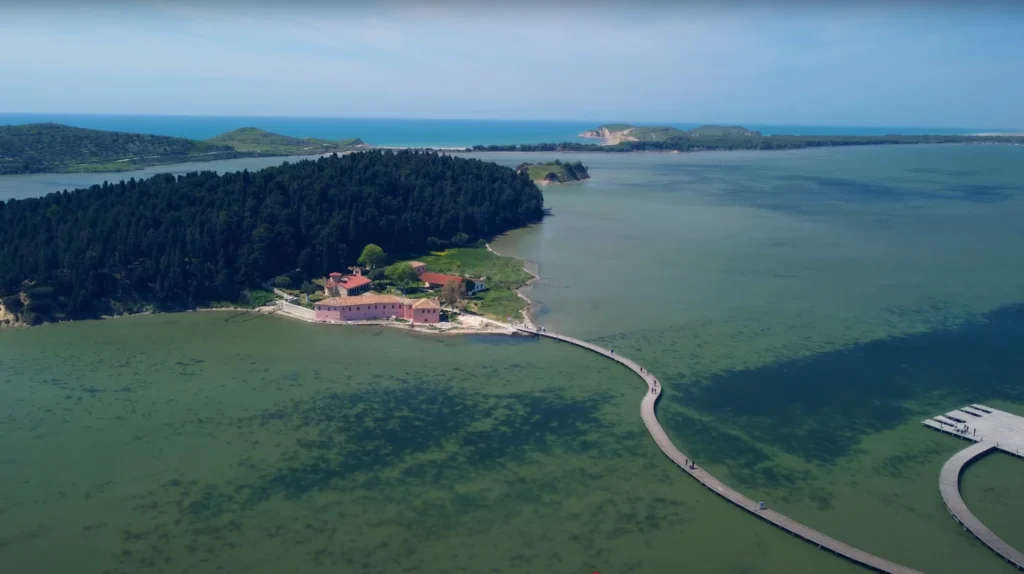
Historical and Architectural Significance
The Zvernec St. Mary’s Monastery is a remarkable example of Byzantine architecture, constructed in the “free cross” style with a dome. According to researcher Aleksandër Meksi, the structure has two distinct construction phases: the old and the new parts. The older section consists of the nave (hall) and narthex (antechamber). The nave is shaped like a free cross, featuring an apse, semicircular prothesis, and a diaconicon. Its dome, built with stone and brick, stands as a testament to medieval craftsmanship. The narthex, a quadrangular extension, complements the nave.
The newer additions, including the exonarthex (portico) and bell tower, were constructed later using techniques that reflect Roman influences. The exonarthex’s facade is adorned with seven arches supported by six columns, blending Roman and Byzantine architectural styles. Opinions on the monastery’s construction date vary; Meksi attributes it to the 13th-14th centuries, while other scholars, like Austrian researchers Helmut and Herta Buschhausen, suggest it dates back to the 10th century. A fascinating hypothesis by researcher Theofan Popa posits that a tombstone inside the church may belong to Argiros Karanxha, a nobleman from the Byzantine era.

A Hub for Monastic Life
The Zvërnec Monastery was a haven for monks who sought solitude and spiritual connection. These monks adhered to strict rules of faith, obedience, and communal prayer, dedicating their time to crafts, writing, and other pursuits. The monastery’s remote location made it ideal for monastic life, echoing the practices of early monastic pioneers like Pachomius in 4th-century Egypt.
Legends and Historical Anecdotes
The monastery is steeped in history and legend. Eqrem Bey Vlora recounts in his book “The Castle of Kanina and Other Writings” a tale from the Norman campaigns of 1081. The Byzantine commander’s wife betrayed her husband to aid the Norman knight Bohemond of Tarentum, only to be imprisoned in Zvërnec Monastery upon the arrival of Robert Guiscard, Bohemond’s father.
Another notable story involves Marigo Posio, the embroiderer of Albania’s independence flag, who was buried in the monastery’s cemetery in 1932. Her grave, lost during Albania’s atheist regime, was rediscovered in the 1980s after a letter from a relative prompted a search. Today, it is a site of pilgrimage and a testament to the monastery’s enduring legacy.
How to Reach Zvernec St. Mary’s Monastery
Reaching Zvërnec Monastery is an adventure in itself. Located about 20 kilometers from the city center of Vlora, the journey typically involves a scenic drive through the Narta region. Visitors can park near the lagoon and walk across the picturesque wooden bridge connecting the mainland to the island. The bridge, surrounded by serene waters and lush vegetation, is an attraction on its own, offering breathtaking views of the lagoon.
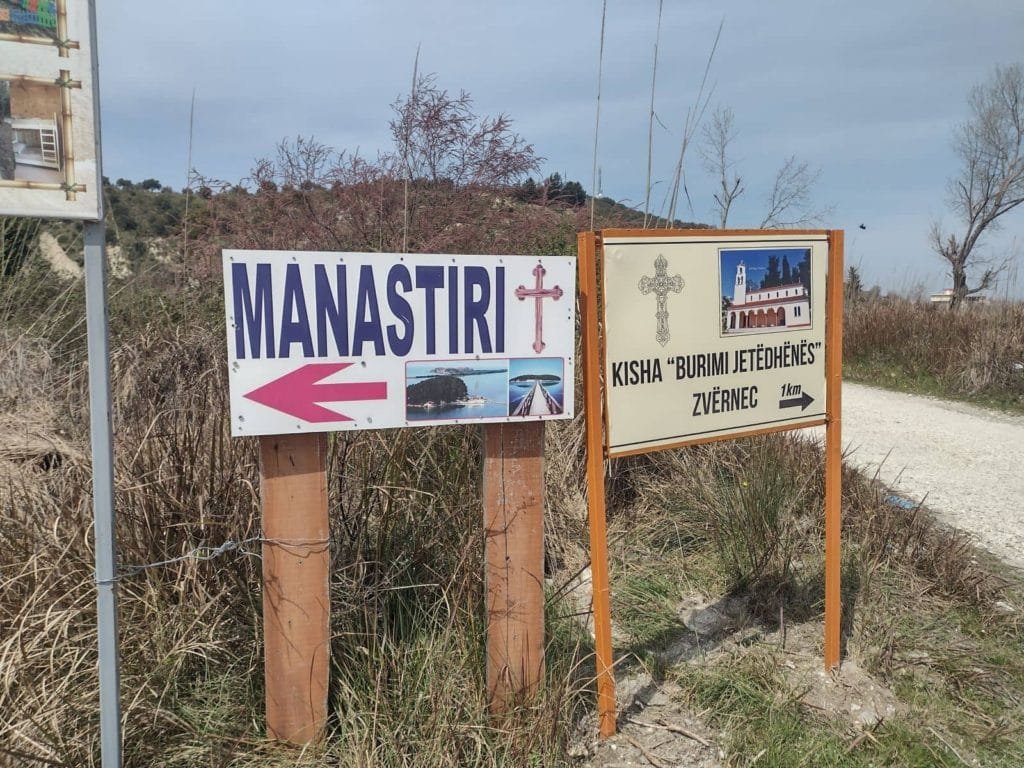

Why Visit St. Mary’s Monastery
Zvernec St. Mary’s Monastery is not just a religious site but also a cultural and natural treasure. Its secluded location provides a peaceful retreat from the bustle of daily life, making it a perfect destination for reflection and exploration. History enthusiasts will appreciate its Byzantine architecture and centuries-old stories, while nature lovers can enjoy the pristine beauty of the Narta Lagoon and its unique ecosystem. Visiting this monastery is undoubtedly one of the top things to do in Vlora.
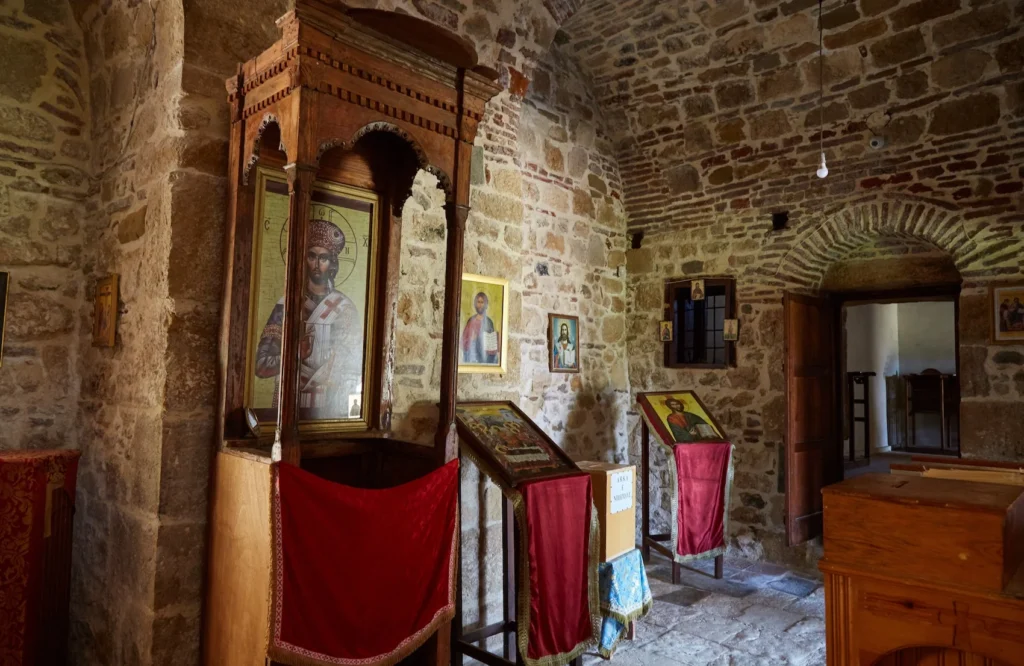

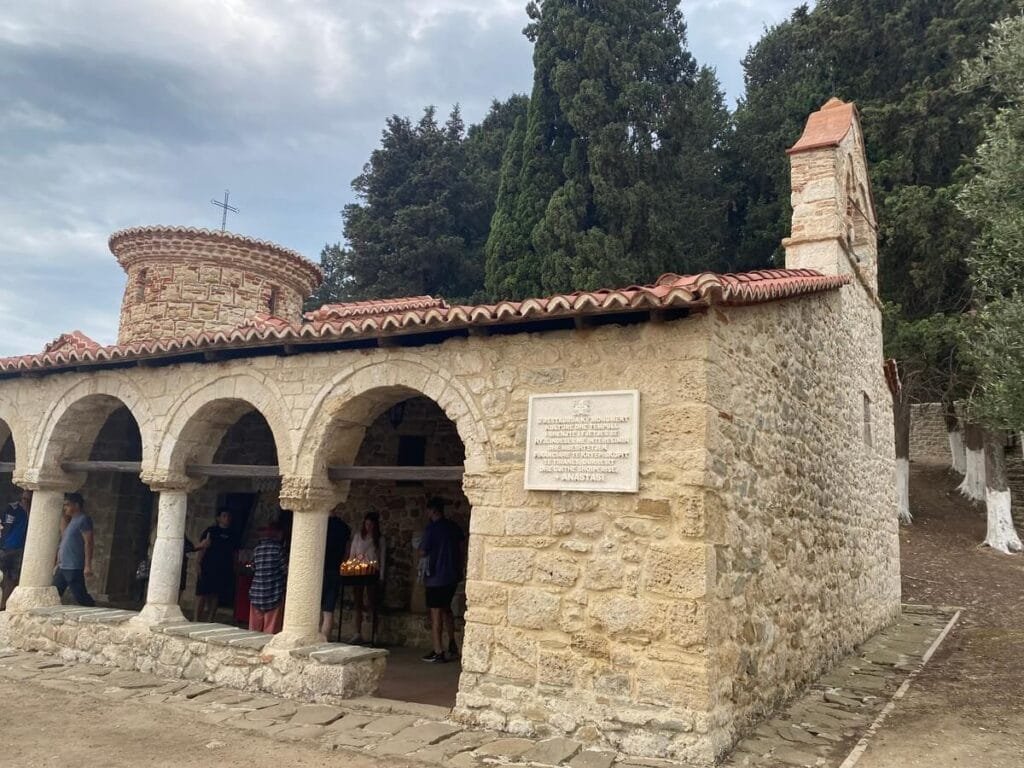
Tips for Visiting Zvernec St. Mary’s Monastery
- Time Your Visit: Early mornings or late afternoons are ideal to enjoy the serene atmosphere and avoid crowds.
- Dress Modestly: As a religious site, modest clothing is recommended to show respect for its sacred nature.
- Bring a Camera: The monastery and surrounding lagoon offer stunning photo opportunities, especially during sunrise or sunset.
- Explore the Area: Combine your visit with a tour of the Narta Lagoon and its nearby attractions to make the most of your trip.
- Check Accessibility: While the bridge and island are generally accessible, ensure you have sturdy footwear for the walk.
A Modern Tourist Attraction
The Zvërnec Monastery has become a key cultural and natural attraction in Vlora, drawing thousands of visitors annually, including many from Spain, Morocco, and Italy. Tourists marvel at its serene environment, rich history, and stunning architecture. The Regional Directorate of Cultural Heritage in Vlora actively promotes the monastery, highlighting its unique blend of history, culture, and natural beauty.
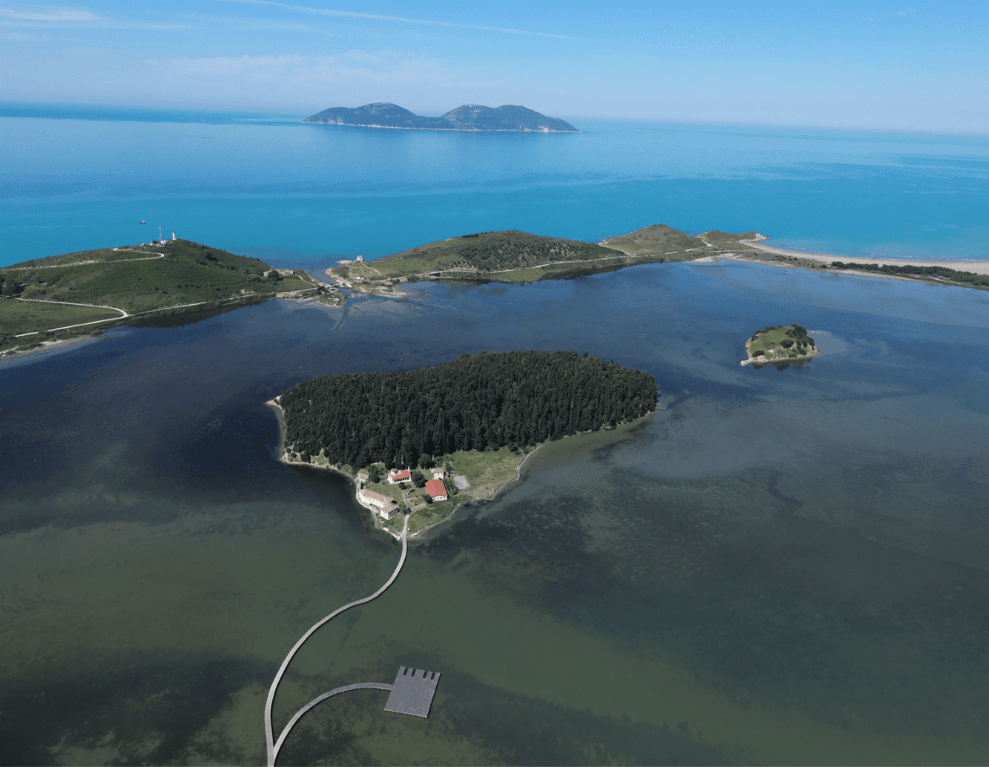
Visitors often describe the monastery as a place where time stands still, its tranquility disturbed only by the gentle rustling of leaves and the occasional ringing of its bells. These elements, combined with the nearby cemetery and the lagoon’s picturesque setting, create an unforgettable experience.
Conclusion
The Monastery of Saint Mary of Zvërnec stands as a symbol of Albania’s Byzantine heritage, blending historical, cultural, and architectural significance. Whether you are a history enthusiast, a spiritual seeker, or a lover of nature, Zvernec St. Mary’s Monastery offers a unique glimpse into a world where history, faith, and beauty converge. As a cornerstone of Vlora’s tourism, like Kanina Castle, it continues to inspire and attract visitors from around the globe.


